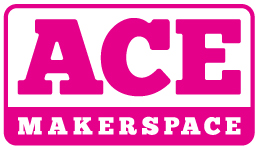Set up the bed and materials
- Zero the Z – see How to raise and lower the bed (Z axis)
- Prepare your material for a test cut on the laser bed
- Jog laser head over to the material using arrow buttons to move a little bit, and hold down to move a lot.
- Use the focus tool to get a good start point for the focus process. Adjust the Z axis by raising/lowering table On laser (Z+/Z-) BUT NEVER WITH SOMETHING UNDER HEAD.
- Focus by raising/lowering table On laser (Z+/Z-). You are aiming to land the focal point of the laser in the middle (Z) of your material. For thick material you may need to refocus on multiple passes.
Cutting a test file
- Open LaserSoft
- Set the parameters for your workspace (i.e. Set relative origin point) – click “Parameters”, then “Workspace”:
- Set Platform -> Relative Position setting to choose the reference origin relative to your design.
- Draw a shape to test with; set the power and speed (see the binder or poster for settings for your specific material, and see Tips below).
- Download your test art to the laser
- Position the laser head over the material (mindful of relative origin)
- Press “ORIGIN” – ANY time you reposition the laser PRESS ORIGIN
- Press the “Run Box” button to confirm you will be on the material (rectangle icon with arrows on control panel)– this will move the laser in a rectangle around the area it will operate, without turning on the laser.
- Start the cut– click Start! DO NOT LEAVE THE LASER WHILE IT’S CUTTING. You need to watch it at all times to make sure nothing bad happens (e.g. burning down the building).
Adjust the focus, power, and speed settings as needed until you get the cut you desire.
Tips
Before putting your material into the laser cutter, consider testing your image on paper with a low power setting. Once it looks good on paper you can place your material on the paper so you know it is positioned properly, and refocus if the material is thick.
When dialing in material settings, it’s important to test the kind of shapes you’ll be cutting. The speed setting is a maximum but the laser will move more slowly for small cuts or corners, so if you test with a small cut and then try to cut a large piece you may be disappointed.
Relatedly, before unloading the bed, check that your cuts actually went through (use tape to try to pull the cut-out parts up). If it isn’t fully cut, you can just run it again. But if you’ve already taken things out, it will be much harder to do a second cut in the exact same place.
We teach a course on designing for laser cutting that talks about various operator techniques for breaking up your art for optimal cutting based on these factors.
When engraving raster images, they go much faster if you use a lower DPI or larger scan gap. Experiment to find the lowest DPI that still looks good while providing a good mix of speed. Generally using a scan gap much smaller than the actual spot size of the laser is a waste of time.
